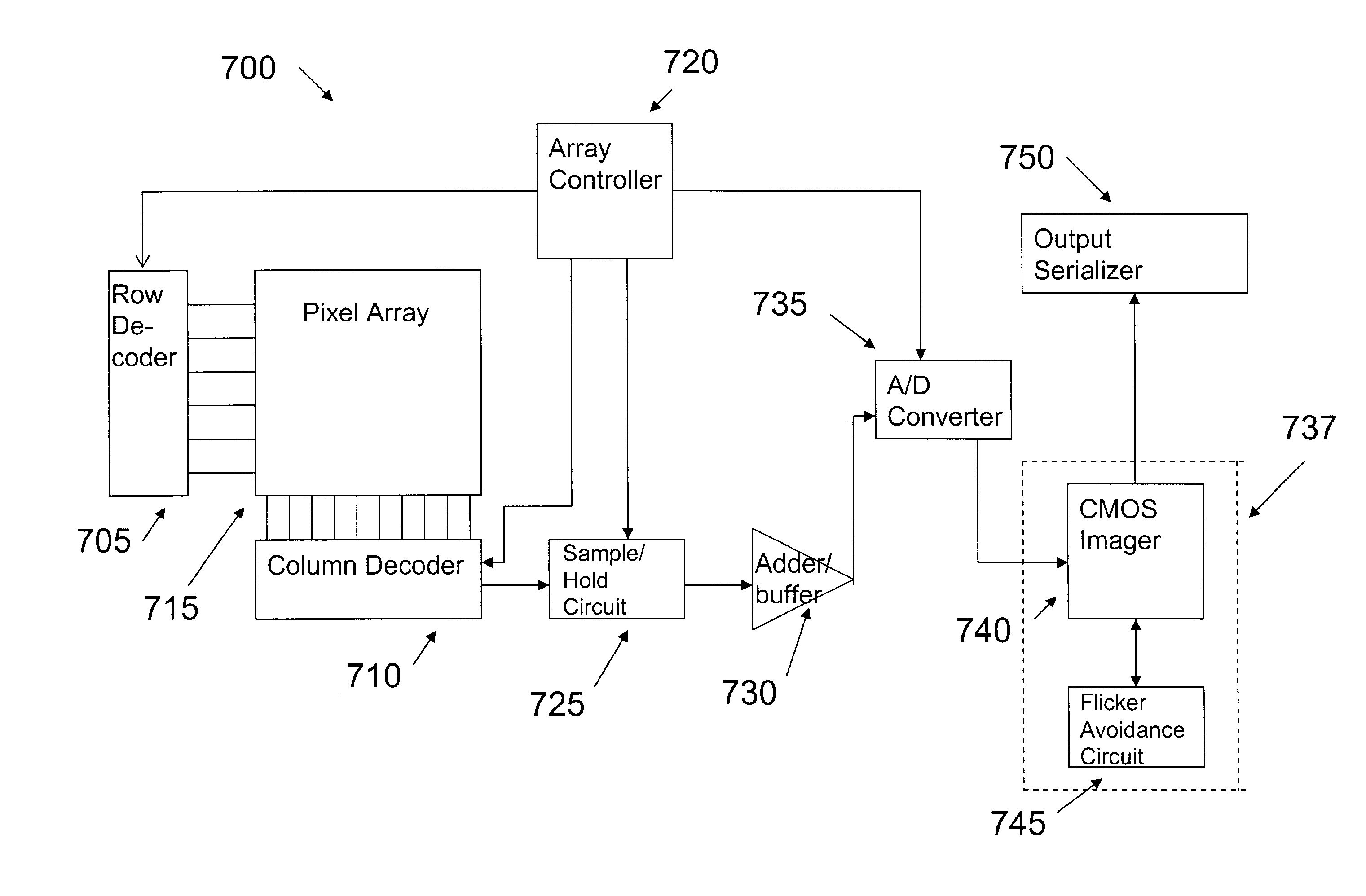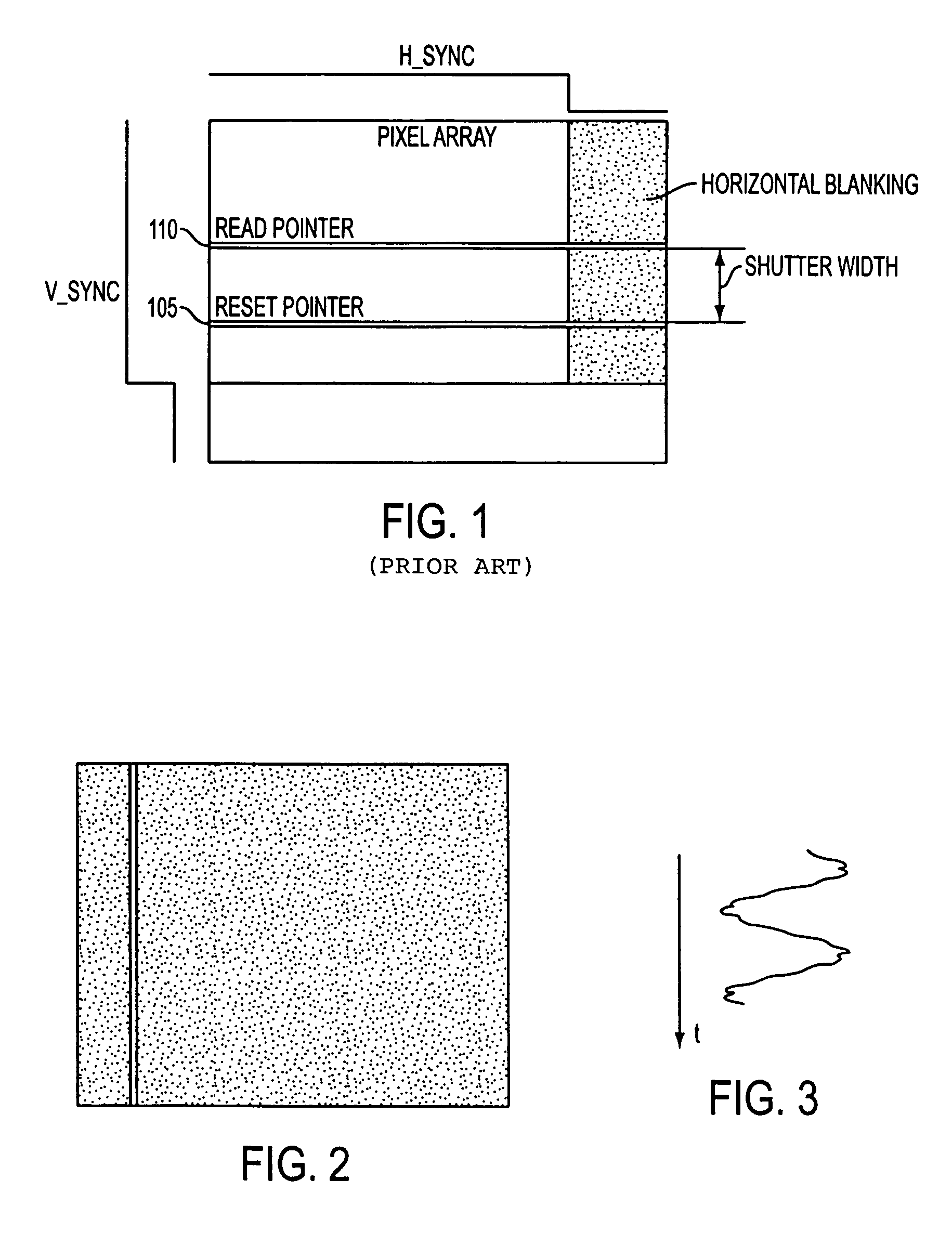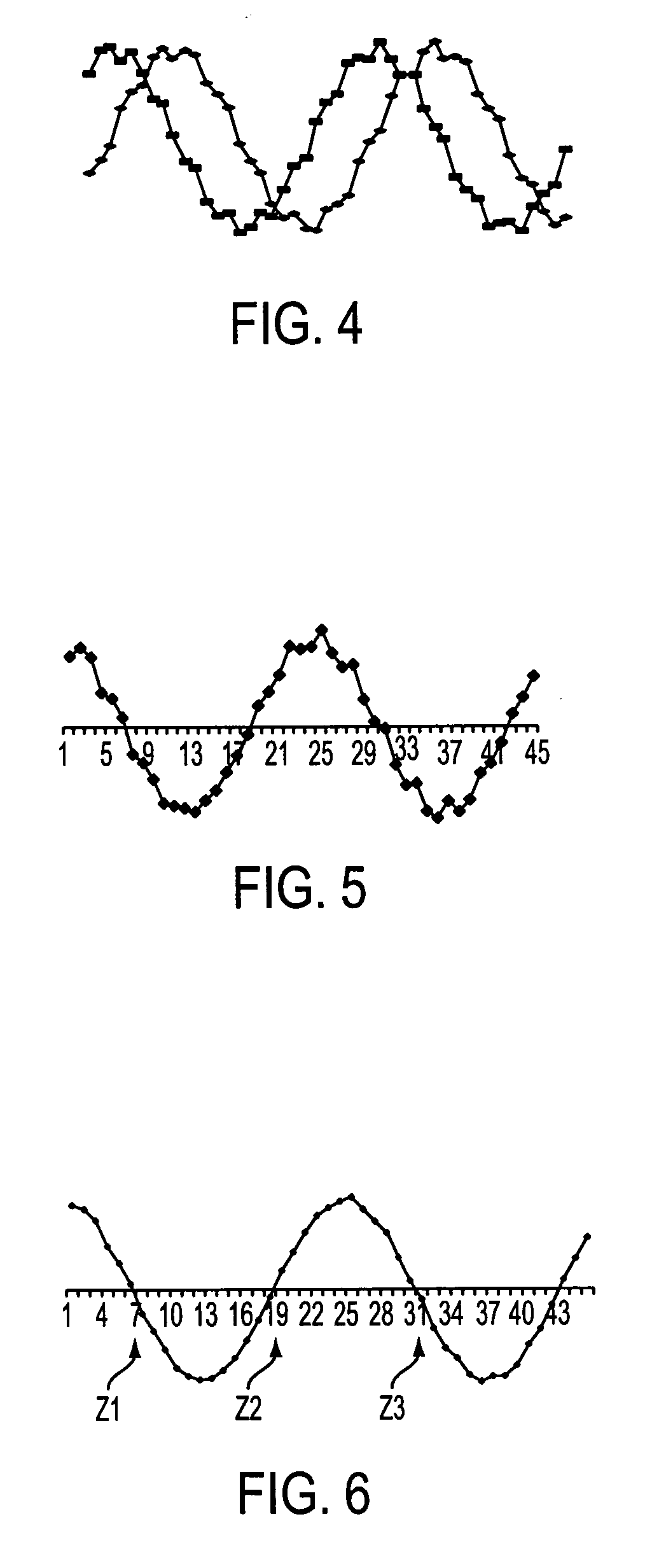Method for mismatch detection between the frequency of illumination source and the duration of optical integration time for imager with rolling shutter
a technology of imager and rolling shutter, applied in the field of cmos imager and imaging system, can solve problems such as flickering or “running bands” in the image fram
- Summary
- Abstract
- Description
- Claims
- Application Information
AI Technical Summary
Benefits of technology
Problems solved by technology
Method used
Image
Examples
Embodiment Construction
[0021]Most fluorescent illuminators produce alternate light intensity. Irradiated light intensity, L(t), has the frequency that is twice that of AC power supply in use, f(t).
L(t)=A sin(2πft)2 (1)
[0022]Signal level accumulated in the pixels of CMOS image sensor with rolling shutter operation is proportional to the integration time IT (exposure or shutter width). Flicker occurs when the shutter width is not an integer multiple of the period of the light intensity. In imagers with rolling shutter operation, flicker manifests itself as dark and bright bands “running” through the image. In this situation, the signal accumulated by the pixels in a given row depends on the phase relationship between optical integration time and the period of the light intensity fluctuation. This can be expressed as an integral of light intensity over integration time as:
[0023]g(T0)=∫T0T0+ITL(t)ⅆt=A4π·f(2π·f·IT+cos(2π·f(2T0+IT))·sin(2π·fIT)(2)
where T0 is the time corresponding to the begin...
PUM
 Login to View More
Login to View More Abstract
Description
Claims
Application Information
 Login to View More
Login to View More - R&D
- Intellectual Property
- Life Sciences
- Materials
- Tech Scout
- Unparalleled Data Quality
- Higher Quality Content
- 60% Fewer Hallucinations
Browse by: Latest US Patents, China's latest patents, Technical Efficacy Thesaurus, Application Domain, Technology Topic, Popular Technical Reports.
© 2025 PatSnap. All rights reserved.Legal|Privacy policy|Modern Slavery Act Transparency Statement|Sitemap|About US| Contact US: help@patsnap.com



